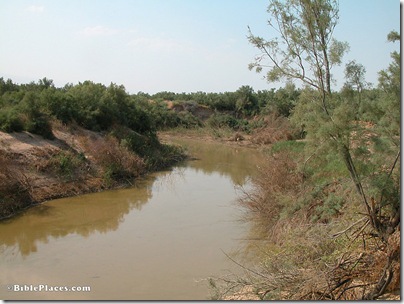The press release of the Israel Antiquities Authority:
Two Exhibitions from the Vast Collections of the IAA in New York City Beginning September 21, 2008
The Metropolitan Museum of Art will exhibit the dazzling Gold – Glass Table from Caesarea.
The Gold Glass Table will be on display in the Byzantine Galleries of the Metropolitan Museum.
Dating to the late 6th, early 7th century CE, this extraordinary, one of a kind panel was excavated in a Byzantine period mansion in the coastal city of Caesarea, when a large mosaic floor known as the Birds Mosaic, was exposed for conservation in 2005. The nearly intact panel is shaped like the letter sigma and made of small glass pieces using the opus sectile technique. The panel was discovered with its face down directly on the mosaic floor and was covered by ashes and debris from the ceiling and the second floor. It comprises a wide frame surrounding the central part, both made of a combination of delicate, translucent gold – glass pieces and opaque, colored mosaic glass pieces. The square gold – glass pieces were decorated with a stamped design of flower or cross. A workshop for wall opus sectile made of stone panels was recently excavated in Caesarea, and one can assume the Gold Glass Table was produced by local artists. The conservation, restoration and exhibition of the Gold Glass Table, was made possible by generous funding from the Margot and Tom Pritzker Foundation. Also at the Met, in the Ancient Near Eastern Art Galleries, are remarkable Chalcolithic period objects on long-term loan to the museum, including examples from the Nahal Mishmar treasure such as the Hippopotamus tusk with circular perforations, and the wonderful copper standard, as well as ivory figurines from Beer-Sheva.
Separately, at the Jewish Museum, a wonderful exhibition – The Dead Sea Scrolls: Mysteries of the Ancient World, will include six Dead Sea Scrolls from the collections of the Israel Antiquities Authority – the largest and most comprehensive collection of Dead Sea Scrolls in the world. The scrolls on display represent the important transformation that occurred in Jewish worship from sacrifice to Bible study and prayer, the debates among Jewish groups of the Second Temple Period, and the indirect connections between the scrolls and early Christianity. The scrolls on display include a part of one of the earliest copies of the Hebrew Bible, the Book of Jeremiah, which dates to 225-175 BCE. Other texts include an apocryphal Jewish work, the Book of Tobit, which was rejected for the Hebrew canon but eventually accepted into the Christian Old Testament; an early example of a prayer from Words of the Luminaries; and Aramaic Apocryphon of Daniel, which mentions a son of God.
Also shown will be excerpts from two sectarian compositions.
The Israel Antiquities Authority is the pre-eminent organization in the field of Biblical and Israeli archaeology, custodian of more than 1.5 million objects among them 15,000 Dead Sea Scrolls, and 30,000 archaeological sites. These exhibitions are part of our continued effort to share the archaeological treasures of the Land of Israel with audiences around the world.
For downloading images please click here [ http://www.antiquities.org.il/images/press/iaa.zip ]
1. The Gold Glass Table – Photo by Niki Davidov, Israel Antiquities Authority
2. A Fragment of a 2,000 Year Old Psalm Scroll- Photo by Tsila Sgiv, Israel Antiquities Authority
HT: Joe Lauer
